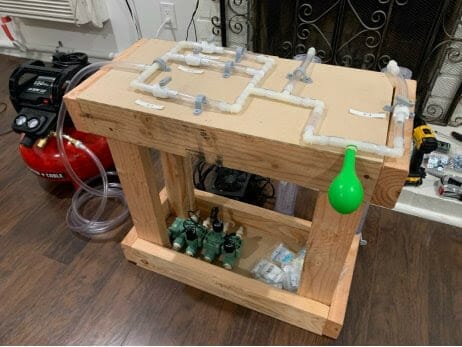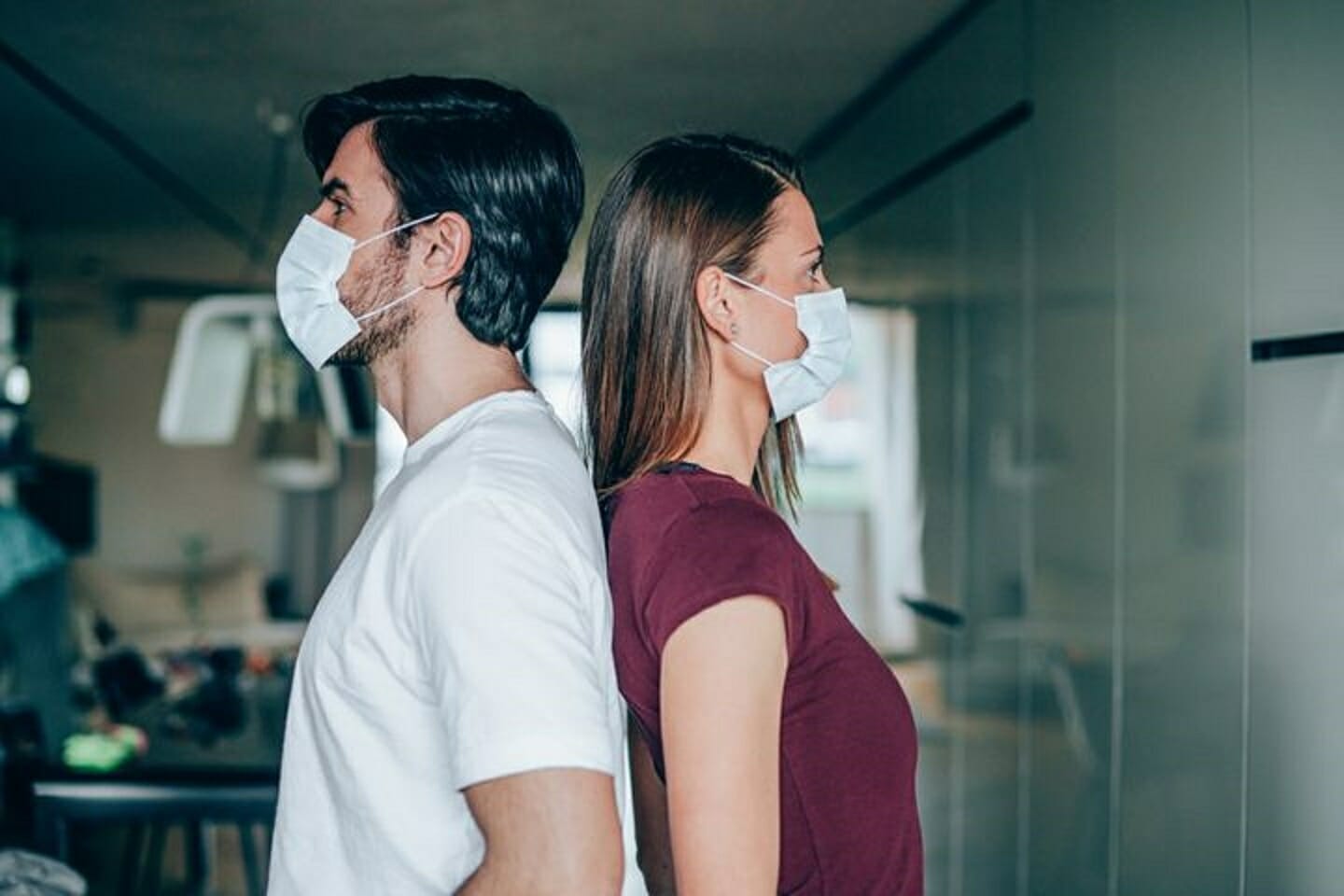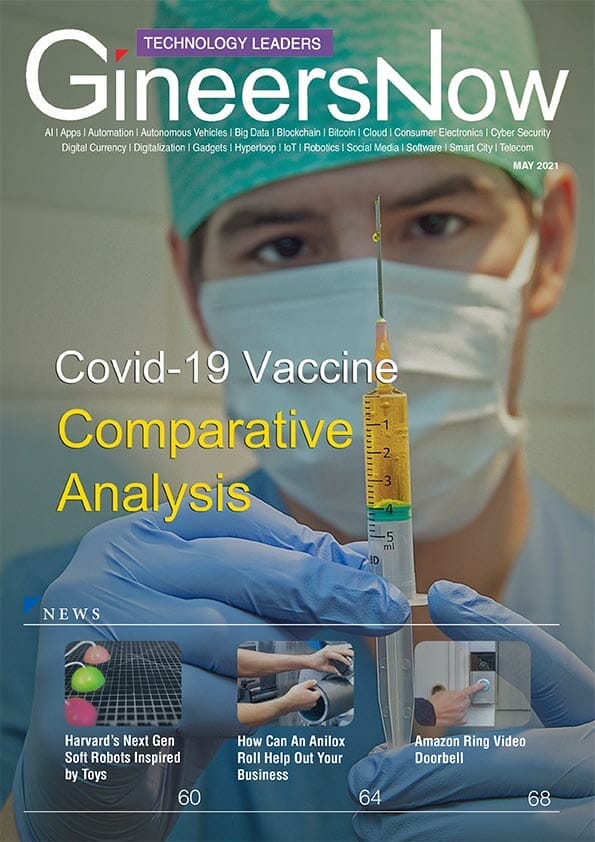DIY Ventilator made from hardware store items
Three weeks ago, GineersNow editors shout-out to engineering universities around the world to build a DIY ventilator. Last week, we received this outstanding prototype and verified its authenticity.
A UCLA Biodesign Fellow has developed in one week, a working, low-cost ventilator prototype built from parts purchased at a hardware store like ACE Hardware, Cobankiat Hardware or Home Depot. If additional development with medical-grade materials, further testing and clinical studies yield positive results, the device could provide treatment for patients who need respiratory support but not the full functionality of a high-priced ventilator.
Mechanical ventilators in today’s hospitals are highly sophisticated, powerful devices, capable of adapting to the varying needs of patients with a wide range of pulmonary disorders, including chronic obstructive pulmonary disease, or COPD, and amyotrophic lateral sclerosis, or ALS. These full-featured ventilators are complex and expensive, costing from $30,000 to $50,000 and requiring dedicated software to administer high concentrations of oxygen to assist patients in respiratory distress. Why not a DIY from a hardware store?
But treatment of some lung problems, like those often experienced by patients with COVID-19, does not require that level of sophistication, and the new prototype – a sort of “ventilator-lite” – might provide the essential lifesaving functions at a fraction of the price.
Glen Meyerowitz, a graduate Electrical and Computer Engineering student at the UCLA Samueli School of Engineering, watched with alarm earlier this month as news reports and medical professionals predicted a severe shortage of ventilators needed to treat the projected surge in COVID-19 patients. He looked at research coming out of Seattle, China and other disease hot spots around the world, reviewed widely accepted treatment protocols and consulted with clinicians from around the U.S. to determine the exact functionalities needed in a device.
His review of clinical research and discussion with over a dozen medical professionals confirmed that COVID-19 patients often need treatment for acute respiratory distress syndrome, or ARDS, which has a much narrower treatment regime than that needed by many patients typically seen in an ICU. He set out to design a smaller, simpler device capable of providing the standard level of care for ARDS – the ARDS Networkprotocol – but without the extra features and price tag of a standard machine. Using parts purchased from a hardware store, he built his prototype in a little under one week.
Early tests were encouraging, and now Meyerowitz is in contact with several certified design and manufacturing firms to begin medical-grade production of the devices for testing at the UCLA Simulation Center in preparation for an IRB study at UCLA Health. The Biodesign team is working on several fronts to maximize efficiency because the course and duration of the COVID-19 pandemic is unknown but production of a thoroughly tested and refined device is expected to be several months away. In any event, the current shortage brings to light the need for supplies of low-cost ventilators for similar patients in similar circumstances.

“Direct collaboration with UCLA Health’s clinical community is key to identifying and optimizing the specific features needed for this unique clinical challenge,” said Meyerowitz, adding that the team is working with UCLA Health’s Department of Anesthesiology to best replicate the conditions that clinicians are facing.
“This low-cost ventilator prototype is an excellent example of how interdisciplinary teams at UCLA Health are collaborating to find medical solutions. Downstream considerations, such as readily available manufacturing and supply chain resources, regulatory clearance, as well as hospital staffing in the event of a surge will need to be addressed to move this expeditiously from design and development into accelerated service.” – Jennifer McCaney, co-executive director of UCLA Biodesign
“The UCLA Biodesign Fellowship provides inventive engineering, medicine and business entrepreneurs an opportunity to prototype solutions to clinical needs at UCLA Health. In the COVID-19 crisis, Glen saw a possible opportunity to transform the practice of medicine and individual patient lives in an immediate and profound way.” – Desert Horse-Grant, Sr. director, UCLA Health Research and Innovation, co-executive director of UCLA Biodesign
“UCLA Biodesign utilizes an interdisciplinary approach to assemble a team of experts to tackle some of today’s most challenging clinical needs – and there is no greater need at this time than saving lives during the fast-growing COVID-19 pandemic.” – Johnese Spisso, president of UCLA Health; CEO of UCLA Hospital System and Associate vice chancellor of UCLA Health Sciences; Member of the Biodesign Program Advisory Board
Although Meyerowitz and the team are not yet able to predict the final price tag, they expect the ventilators might be mass produced in the range of $1,000 per unit.
Watch Live Stream & Real Time Statistics of COVID-19
Other COVID-19 Updates
Tiger Tests Positive for Coronavirus at New York Zoo
Harvard Talks: Cut Salaries or Cut People?
Lamborghini Medical Shields & Surgical Masks for Health Workers
WHO COVID-19 Buildings & Tents Screening Layout Standards
UCLA Engineer Made a Ventilator from Hardware Items
Airbus Gives 3D-Printed Hospital Visors to Health Workers
Airlines COVID-19 Analysis: Aviation Collapsed
Forecast Deaths, Hospitals & Ventilators: COVID-19 Impact, USA Full Report
Ventilation Standards for Buildings Converted to COVID-19 Hospitals
Harvard Talks: The Supply Chain in Post COVID-19 Era
COVID-19 Deaths to Reach 81,000 in US By June – Forecasts by IHME & Univ. of Washington
Top 10 Largest Ventilator Manufacturers in the World
List of Government Officials Tested Positive in PH
Metronic Ventilator Ramping Up Production
Engineers, Can You Help Build a DIY Ventilator for Hospitals?
Water is Our First Line of Defense Against COVID-19
COVID-19 Economic Aftermath on the Construction Industry
Complete List of Companies Working on Coronavirus Vaccine
COVID-19 War: 70K Physicians vs 109M Filipinos
Famous People Who Have Tested Positive for COVID-19
These Politicians Tested Positive for Coronavirus (COVID-19)
Postponed Exhibitions in the Philippines due to COVID-19
Cancelled Major Events Around the World Due to COVID-19
World Bank Gives $12 Billion to COVID-19 Affected Countries
COVID-19 Philippines: DOH on Code Red Status
PPE Shortage Endangering Health Workers Worldwide
The List of COVID-19 Disinfectants Approved by EPA
World Bank Gives $12 Billion to COVID-19 Affected Countries
Air Cargo Demand Down 3.3% due to COVID-19 Disruption




















